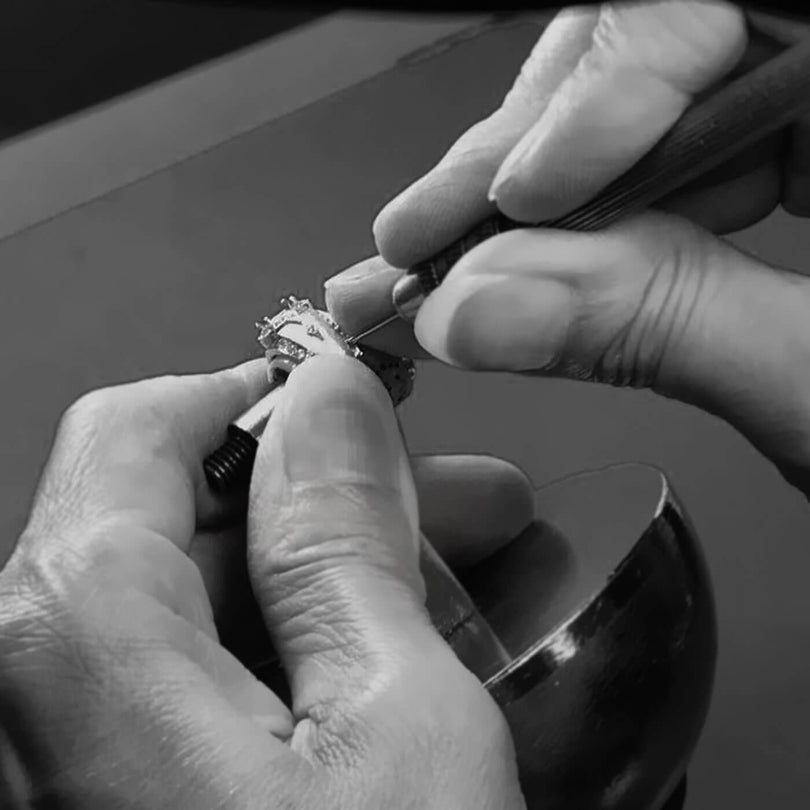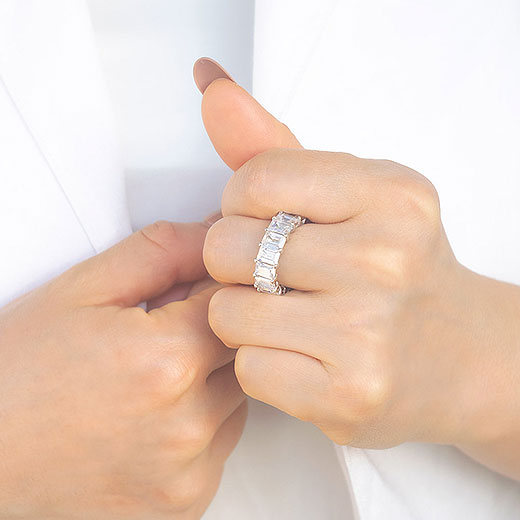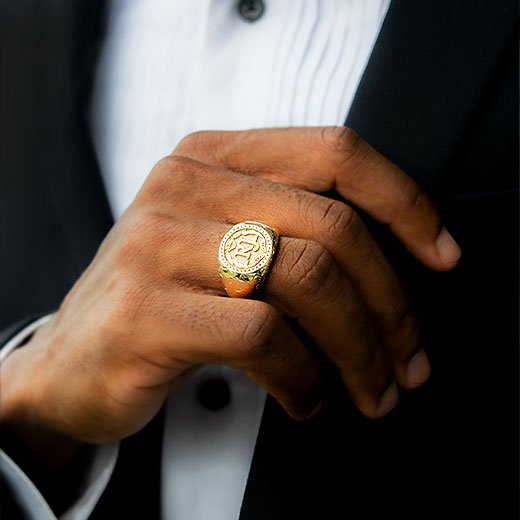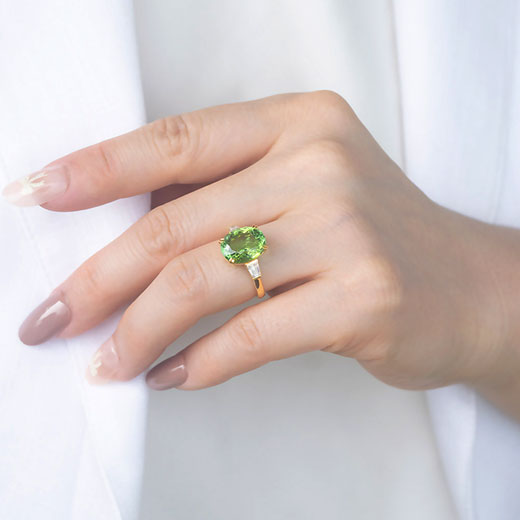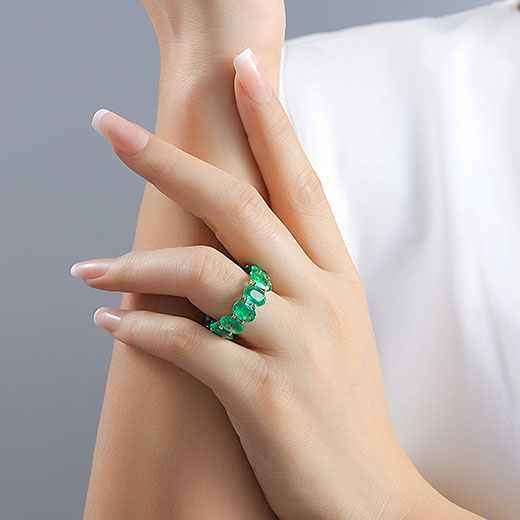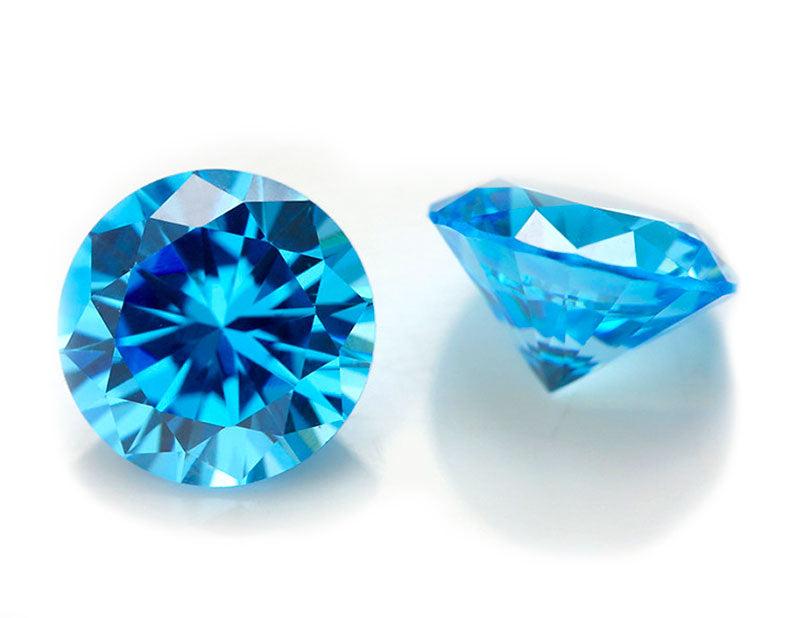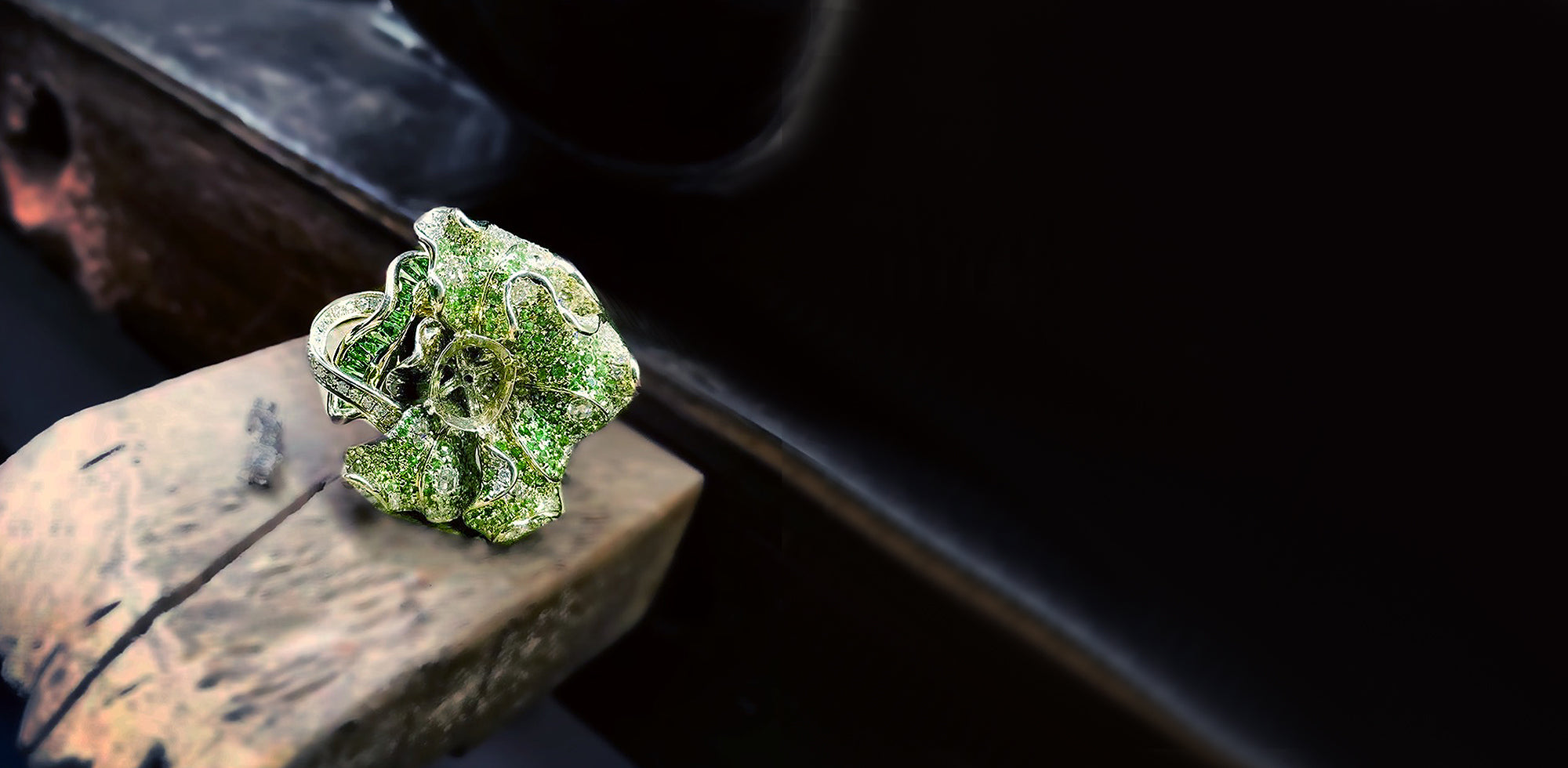Outline
The stunning sea-blue-colored gemstone Aquamarine gets its name from the Latin word aqua Marinus, which means "seawater." It belongs to the beryl mineral family. The presence of iron during the stone's formation gives it a distinct color. Aquamarine comes in a variety of colors, from pale blue to blue-green or teal. The most valuable and coveted are those with a dark and deeply saturated blue tone.
Brazil is the world's leading producer of Aquamarine, with mines located throughout the country. Australia, Myanmar (Burma), China, India, Kenya, Madagascar, Mozambique, Namibia, Nigeria, Pakistan, Zambia, Zimbabwe, and the United States, mine this clear blue crystal. The largest known Aquamarine, weighing around 244 pounds, was discovered in Brazil in 1910.
The Dom Pedro Aquamarine, weighing 10,363 carats, is currently on display at the Smithsonian's National Museum of Natural History and is currently the world's largest cut Aquamarine.
Compared to Natural Emeralds, Aquamarines are frequently available in nature, also belonging to the Beryl family. Aquamarines are primarily free of Inclusion, unlike Emeralds, where inclusions are very common.
Natural Aquamarines are fairly hard gemstones, making them a good choice for engagement rings. Natural Aquamarine engagement rings have become a perfect diamond alternative for modern couples today. They also make stunning earrings and pendants and display breathtaking scintillating color and clarity.
Symbolism
Aquamarine is a beautiful, majestic gemstone that is associated with courage, loyalty, and friendship. In challenging situations, it is thought to promote calmness and peace. This fabulous pastel blue gemstone is the birthstone for those born in March and the anniversary gemstone for those celebrating their 19th wedding anniversary.
According to legend, Aquamarine was found in the treasure chests of mermaids and was used as a talisman by sailors to ensure a safe and prosperous voyage across stormy seas. It was used as a poison antidote during the Middle Ages. Furthermore, Aquamarine was thought to bring victory in battles and court cases.
Carrying this gemstone was thought to ensure a happy marriage in the olden days. The stone was also thought to help estranged couples rekindle their love.
Egyptians and Sumerians revered Aquamarine as a powerful symbol of happiness and a source of eternal youth. Aquamarine has been discovered in many Egyptian tombs and burial pits by archaeologists. Legend has it that this gemstone will strengthen the wearer and reveal deception or betrayal. It was said to have the ability to change color and reveal the wearer's real nature. When the stone is light and pale, it represents honesty, whereas it represents anger or bad intentions when it is dark.
Properties
Hardness and Strength
Aquamarines have a glass-like luster and are incredibly hard and durable. On the Mohs scale of mineral hardness, Natural Aquamarine is rated 7.5 to 8, making it suitable and perfect for everyday wear. Aquamarine is a stunning center stone for any piece of jewelry, be it a ring, necklace, pendant earrings or heirloom brooch. However, this gemstone is not impervious to damage and can crack when subjected to a strong impact.
Treatment
Aquamarine is generally light blue or greenish-blue in color in its original state. Natural Aquamarine is frequently subject to extremely high temperatures (approximately 400 ° C) in a controlled setting to remove the green hue. The aquamarine undergoes a heat treatment that changes its physical properties and permanently transforms it into a more valuable pure blue color. A natural aquamarine with a bright blue color, on the other hand, will always command a higher price than a treated one.
Grades
The semi-precious stone aquamarine is one of the most popular in the world. It competes commercially with blue topaz due to its similar color and characteristics.
Color
This gemstone's color ranges from green-blue to pastel blue to greenish-blue, just like seawater. Darker, more intense blues are more expensive than paler, softer blues, which are more readily available. Most dark-colored aquamarines on the market have been heat-treated to give them a richer, more intense color. Due to their scarcity, untreated sea-blue aquamarines are in high demand.
Clarity
The best Aquamarines are clear, transparent, and eye-clean, which means no visible inclusions to the naked eye. Liquid inclusions may be present in some stones, while others have long, hollow, rod-like inclusions typical in beryl gems. A cat's eye or star-like effect is sometimes caused by aligned traces of parallel inclusions, which is rare in this crystal. The inclusions in the finished gem are usually minor or non-existent. The stones that make up the majority of the collection are frequently carved into cabochons.
Cut
This lovely pastel blue gemstone can be cut into almost any shape. Aquamarines, on the other hand, are most commonly found in emerald or oval cuts. Because rough rocks are plentiful and come in large sizes, well-cut aquamarines are abundant as well. Its hardness and attractive color have made it incredibly popular among designers and sculptors who use it to create ornamental objects and stunning fancy cuts.
Carat
This gemstone comes in a variety of sizes, ranging from very small to very large. Large stones, in particular, are plentiful, but their use in jewelry is difficult unless they are used as center stones. Large aquamarine stones weighing more than 25 carats have a lower value due to low demand. An aquamarine can be grouped into the following quality categories based on its properties:
AAAA-Heirloom
The top 1% of extremely rare aquamarines fall into this category. These stones have a high level of brilliance and are eye-clean, meaning no visible inclusions. An heirloom-quality aquamarine is distinguished from the others by its genuinely exceptional medium sea blue color.
AAA-Best
This category includes the top 10% of all naturally found aquamarines. These gemstones have a medium sea blue color and are eye-clean and brilliant.
AA-Better
The top 33% of available aquamarines fall into this category. They're light sea blue with slight inclusions.
A-Good
This category includes the top 75% of available aquamarines and are very light sea blue in hue, and have minor to moderate inclusions.
Care Guides
-
Aquamarine is a durable gemstone, but it still needs to be cared for and maintained. Everyday wear can cause dirt to accumulate, as well as a loss of luster and brilliance. The following care guides will help you keep your aquamarines in like-new condition.
- When doing household chores or engaging in strenuous physical activities, it's a good idea to put your aquamarine jewelry on the side.
- Always keep your jewelry in individual wrappers to avoid scratches.
- Keep your aquamarine jewelry away from chemicals like ammonia and chlorine. Such chemicals can damage the gemstone or its metal setting if they come into direct contact with it.
- Clean your aquamarine jewelry with a soft bristle brush and warm soapy water. Rinse it thoroughly in plain water.
- To avoid a thermal shock, use warm water rather than hot water.
- For long-term storage, wrap it in a piece of cloth or place it in a fabric-lined box.
- It's also a good idea to store your aquamarine jewelry somewhere dark, since prolonged exposure to direct sunlight or other harsh light can cause the gem's color to fade.

